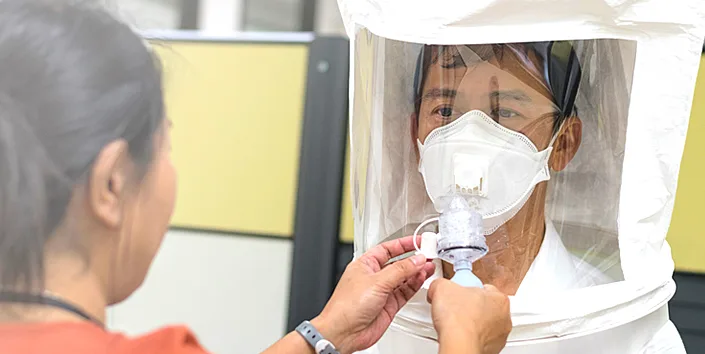Workplaces do not have to have industrial processes or operations to have poor indoor air quality. A workplace’s indoor air quality (IAQ) can be impacted by its construction/building materials, furnishings, equipment (e.g. printers), occupants, activities occurring within the building, and the heating, cooling and ventilation system. Poor air quality can cause workers to suffer headaches, dryness and irritation of the eyes, nose, throat, and skin, allergies and fatigue.
An IAQ assessment conducted by a WSPS occupational hygienist generally includes comfort parameter spot measurements (e.g. carbon dioxide, carbon monoxide, temperature, relative humidity, and particulates) and comparisons to industry standards, as well as a visual assessment of accessible areas. In addition, the IAQ assessment may also include air samples for viable/non-viable mould and tape-lift samples for suspected mould growth on building materials, as well as an initial evaluation of the HVAC system, its operation, and maintenance.
A report outlining the assessment methodology, sample results, an explanation of the findings, and recommended controls is provided.
This service is for office environments and does not include residential applications, as these are outside our jurisdiction.

